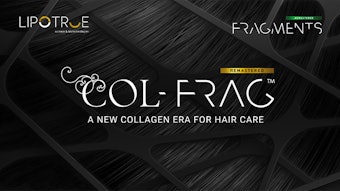Much of today’s public grew up watching television, where investigative reporting, courtroom dramas and shows on crime scene investigation reinforced skepticism and the need for undisputed scientific evidence. It’s no wonder that today’s personal care consumers want measurable proof that products work—and are sometimes even skeptical of that proof.
At the IFSCC conference in Amsterdam last fall, Michael Shermer, PhD, president of the Skeptics Society, reminded us during his keynote address that in science, it is important to maintain a sense of skepticism to ensure that the data obtained from an experiment actually means what the scientist thinks it means.
Consumers perceive products in a similar way, demanding not only that products work, but also to “see it to believe it” for themselves. At the February Cosmeceuticals Summit, Helen Knaggs, PhD, of NuSkin noted a booming trend in devices that consumers can use at home to measure changes in their own skin. This follows with statistics reported by Mintel showing that sales in cosmeceuticals have almost doubled from 2002–2007, on the back of consumer demand for performance.
With growing demand for effective materials that have substantiated claims, Cosmetics & Toiletries magazine takes a closer look in this issue at investigative means to prove efficacy. Dell’Acqua and Schweikert’s article examines the efficacy of an amino acid complex via UVB-induced cyclobutane pyrimidine dimers in reconstituted human skin, as well as its effects on UV light-induced erythema in vivo.
Povey and Daintree demonstrate ultrasound as a means to determine formulation shelf-life and to monitor product quality, while Herrwerth et al. test polysilicone-19 for hair conditioning and UV protection claims through confocal laser scanning microscopy, sunlight simulation, and tensile strength devices, among others. Finally, in Goldstein’s “Tech Edge” column, guest author Jean-Francois Nicolay, PhD, describes the newer concept of peptidomimetics for use in molecular modeling of skin care products.
While advanced devices can test individual materials or formulations to quantify efficacy, as the old adage goes, “Proof of the pudding is in the eating,” or in this case, in the topical application—not to be confused with the alternative, “Proof is in the pudding.” But really, in either case, who would argue with dessert?

![Lead Image2 [nas] 800x450px](https://img.cosmeticsandtoiletries.com/files/base/allured/all/image/2024/10/Lead_image2__NAS__800x450px.6704042d635b8.png?auto=format%2Ccompress&fit=crop&h=191&q=70&w=340)








